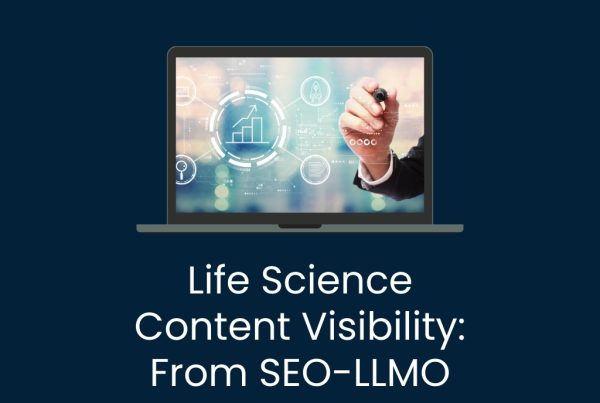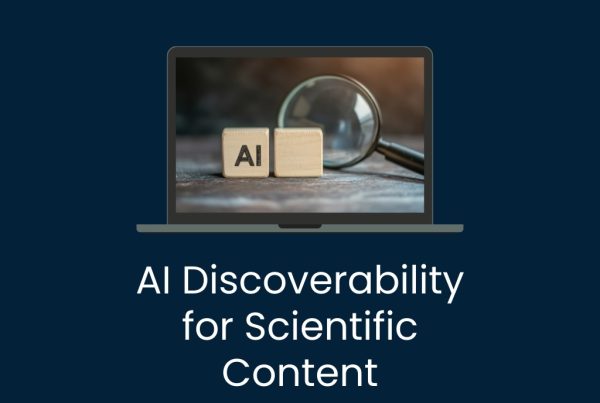The Importance of Persona Development: A Strategic Approach for Engaging Skeptical Scientists
Engaging scientists—a highly analytical, data-driven, and often skeptical audience—in the life sciences requires precision. Persona development has become invaluable for crafting effective strategies, messaging, and sales conversations that resonate with these discerning individuals. This process involves creating detailed, evidence-based profiles of your ideal customers, such as research scientists, lab managers, or procurement specialists, to understand their unique challenges, priorities, and decision-making processes.
Companies that invest in persona development often consider it their “secret weapon,” enabling them to break through skepticism, build trust, and foster stronger customer relationships.
Setting Strategy with Personas
In the scientific community, a generic strategy rarely works. Persona development allows companies to tailor their approach based on what drives each segment of this audience. For example, a company launching a new high-throughput sequencing platform might identify two key personas: “Innovative Investigator Ian,” a principal investigator focused on breakthrough discoveries, and “Efficient Lab Manager Lisa,” who oversees budget and operational efficiency.
By understanding Ian’s goals—pushing the boundaries of science and publishing groundbreaking papers—the company might emphasize the platform’s novel applications and potential to yield impactful data. For Lisa, the messaging might focus on cost-effectiveness, ease of integration, and reliability, ensuring minimal lab downtime.
This level of strategic clarity helps companies allocate resources effectively, ensuring that product development, marketing, and sales efforts align with these personas’ distinct needs.
Aligning CRM Data with Personas
The value of persona development lies in creating insightful profiles and ensuring your CRM captures the right data to bring these personas to life. A CRM system should serve as the repository for persona-aligned information, allowing your team to effectively segment, analyze, and act on this data.
Key Data Points to Align with Personas:
- Job Title and Role: Understanding whether a contact is a principal investigator, postdoc, lab manager, or procurement officer helps align them with the appropriate persona.
- Goals and Challenges: Use CRM fields to capture specific pain points and objectives shared during conversations, surveys, or interactions. For example, a PI might seek faster data acquisition, while a lab manager might prioritize cost reduction.
- Purchasing Influence and Authority: Record whether the contact is a decision-maker, influencer, or end-user to tailor messaging and sales outreach.
- Engagement Behavior: Track interactions such as webinar attendance, content downloads, or responses to email campaigns. These behaviors can signal which persona a contact aligns with and inform how you nurture them.
Example in Practice:
Suppose your CRM segments users into personas based on collected data. A contact identified as a “Lab Manager Lisa” might have records showing:
- Job Title: Lab Manager
- Challenge: Reducing equipment downtime
- Engagement History: Engaged with an email campaign about cost-effective equipment maintenance.
This information allows your marketing team to send Lisa relevant resources like cost-comparison guides, while the sales team can prepare to discuss ROI and support plans during a demo.
By mapping CRM data to personas, your company ensures that every communication—whether it’s a marketing email, a sales pitch, or a post-sale check-in—is personalized, relevant, and aligned with the contact’s priorities.
The Cornerstone for Messaging and Marketing
Scientists are notoriously skeptical of marketing claims. Persona development ensures messaging is backed by evidence and tailored to what resonates most with this audience. Consider how persona development can elevate email marketing, a crucial touchpoint for engaging with scientists. Marketers can create hyper-relevant messaging by using personas to segment their audience based on job titles and CRM data.
For example, a life science company might use personas to differentiate messaging for a new protein analysis tool:
- For “Principal Investigator Patricia”:
- Subject Line: “Accelerate Your Discovery with Unmatched Protein Data Accuracy.”
- Body Copy: Focus on how the tool’s precision leads to faster, publishable results and novel findings, directly tying into Patricia’s primary motivators: advancing her research and securing grants.
- For “Lab Manager Laura”:
- Subject Line: “Save Time and Budget with Efficient Protein Analysis.”
- Body Copy: Emphasize operational efficiency, low maintenance costs, and how the tool integrates seamlessly into a multi-user environment to maximize value for her lab.
By segmenting the email list based on CRM data that aligns with personas, the company can deliver relevant, targeted messages that directly address each recipient’s specific pain points and priorities. This approach significantly improves open rates, engagement, and conversions compared to one-size-fits-all emails.
Scriptwriting for Sales Teams
In sales, persona development is a game-changer for engaging skeptical scientists. Each scientific persona comes with unique objections and priorities that, when addressed effectively, can build trust and confidence. Consider a sales team pitching a next-generation mass spectrometer:
- For “Research Scientist Rachel,” who prioritizes data accuracy and novel applications, the script might focus on the system’s superior sensitivity and how it enables more comprehensive analyses than competitor products.
- For “Facility Manager Mike,” who oversees procurement and budgets, the conversation might shift to the system’s low cost of ownership, extended warranties, and minimal maintenance requirements.
Persona-driven scripts help sales representatives deliver scientifically relevant information with empathy, making the interaction feel more like a collaboration than a transaction.
Why Persona Development is a Secret Weapon for Scientific Audiences
Scientists demand precision, credibility, and relevance. Persona development enables companies to meet these expectations by uncovering the nuances of their audience’s motivations, challenges, and preferences. When integrated with CRM data, this process ensures every touchpoint is informed by deep customer insights, driving alignment across marketing, sales, and product teams. The result? More effective campaigns, higher engagement rates, and stronger customer relationships.
Summary: Why Invest in Persona Development for Scientists?
Skeptical by nature, scientists respond to messaging and strategies that are specific, evidence-driven, and relevant to their unique challenges. Persona development, combined with CRM-aligned data, equips your business to craft tailored campaigns, segment email blasts, and create sales approaches that resonate. Investing in this process can ensure that your strategies build credibility and trust with a discerning scientific audience, turning skepticism into long-term loyalty.
Key Takeaways:
- The Strategic Edge of Personas: Persona development equips companies to engage skeptical scientific audiences by tailoring strategies, messaging, and sales conversations to address their unique challenges, goals, and decision-making processes.
- CRM Alignment for Precision Targeting: Integrating persona data into CRM systems enhances customer segmentation, enabling personalized communications that resonate with different roles, such as principal investigators, lab managers, procurement specialists, and personality types.
- Elevating Marketing and Sales Messaging: Persona-driven approaches ensure marketing campaigns and sales scripts are hyper-relevant, evidence-based, and aligned with scientists’ priorities, improving trust and engagement.
- Driving Alignment Across Teams: Persona development fosters collaboration between marketing, sales, and content teams, ensuring cohesive, audience-focused strategies that deliver measurable results.



